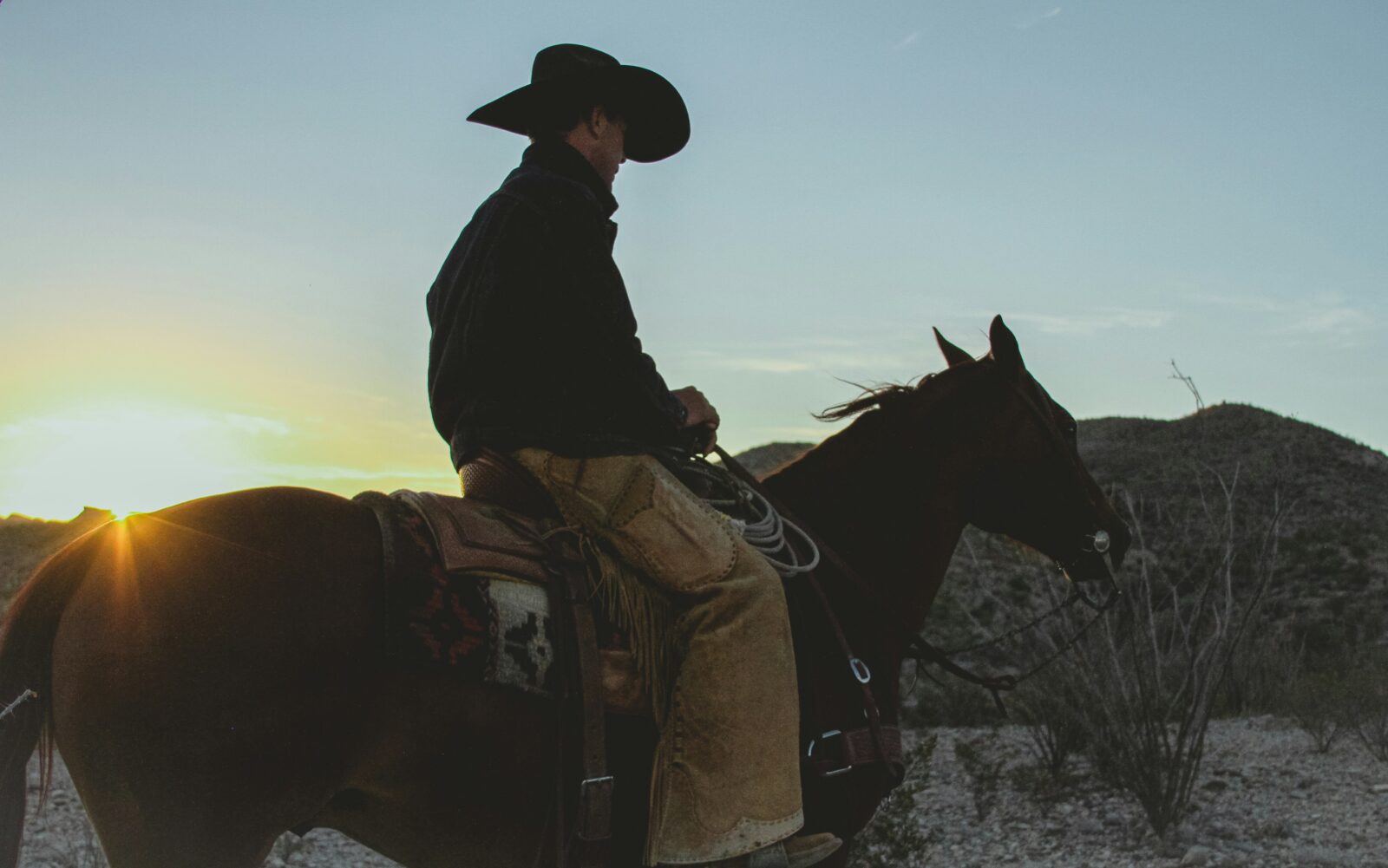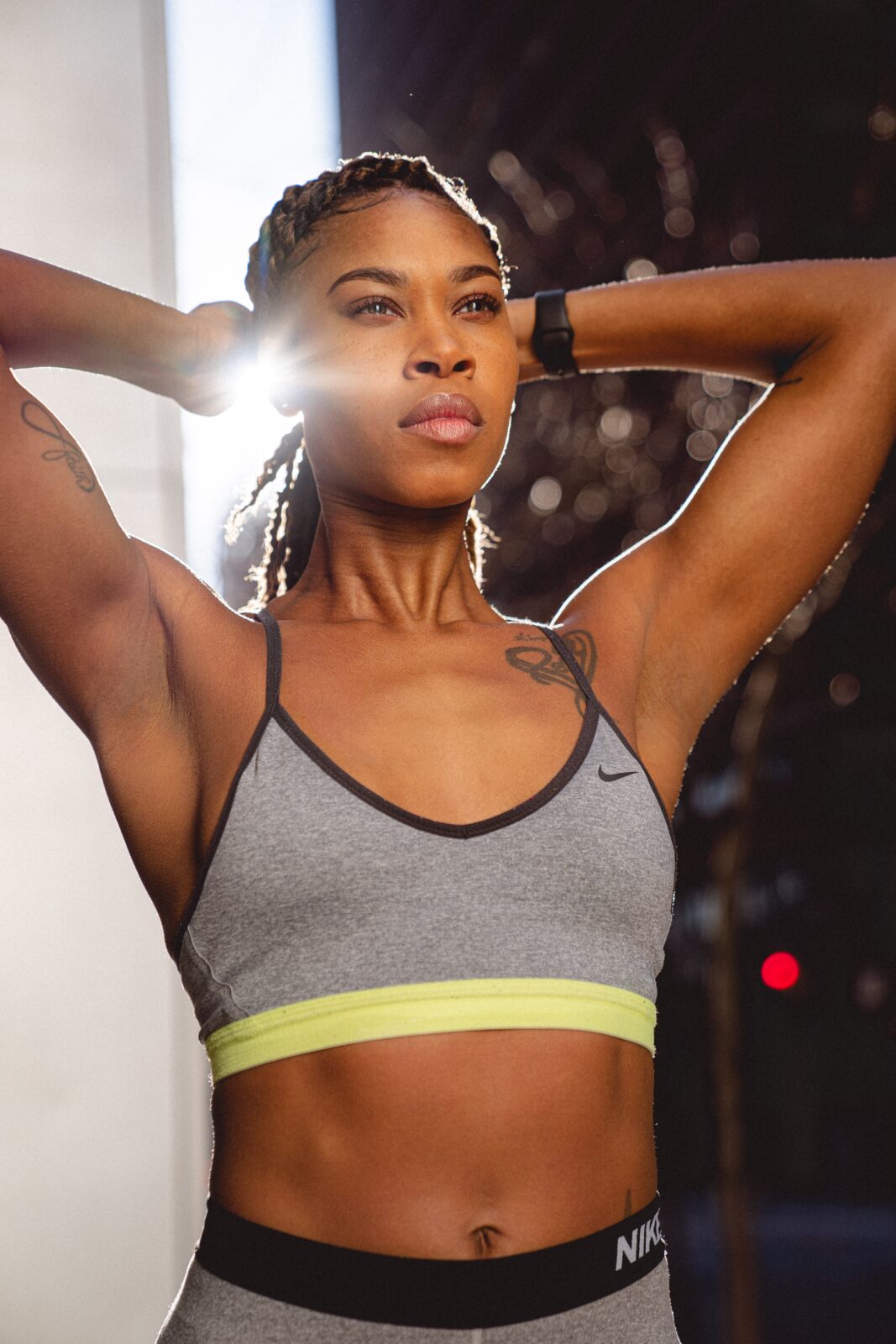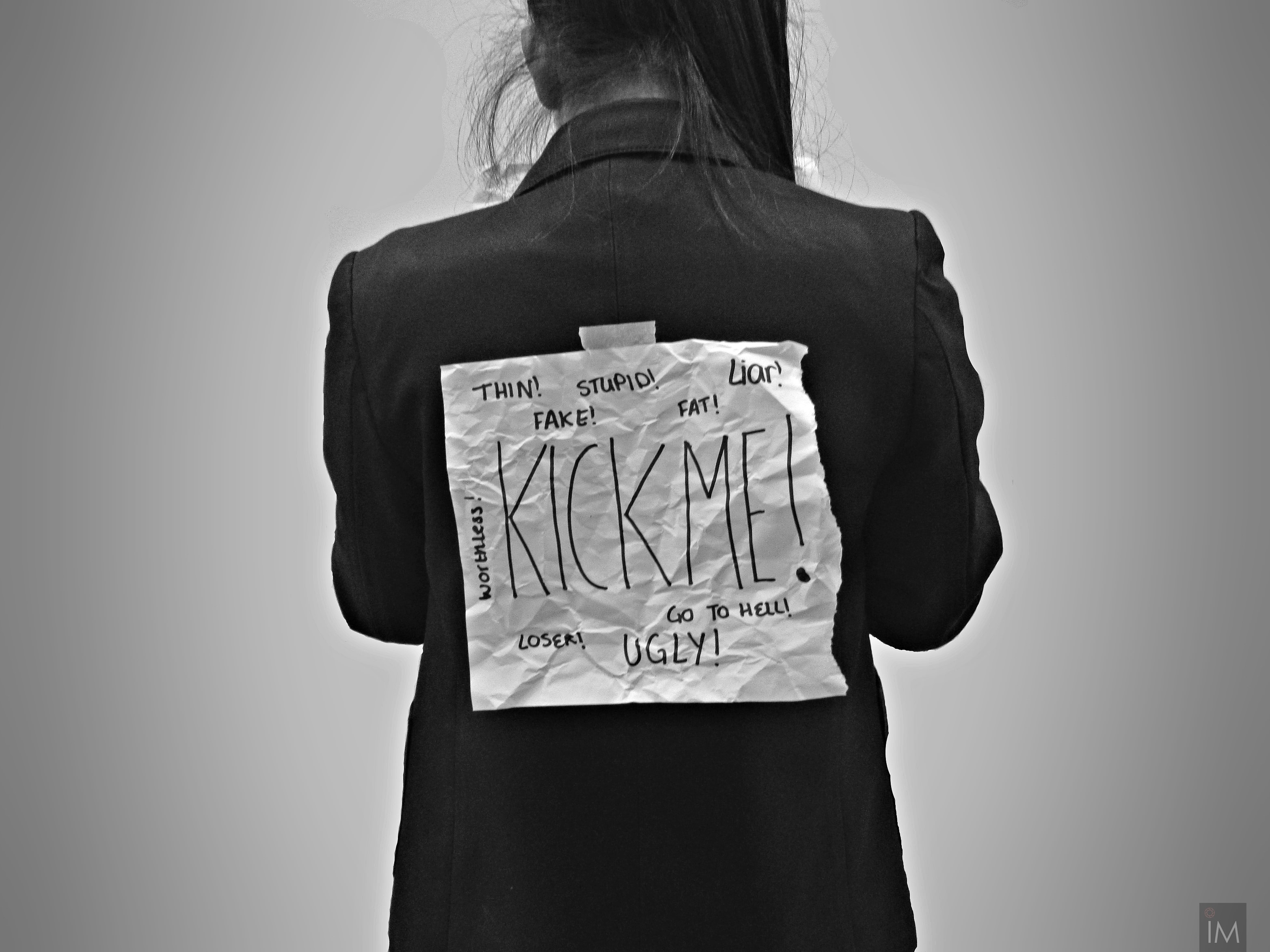The Secret of Life

My sister subscribes to my content and she reads them from time to time. I don’t think she reads all of them though. I test her sometimes by writing about things she might find interesting and sometimes she would reply with a comment. Let’s see if she reads this one. I’ll let you know.
So, this is it. I am going to stop talking about it. This will be my last effort in writing about “Goal Setting” for the year. I had a great time doing the research and I learned a ton. I hope you did too. If you need a recap, here’s a summary and links for your reference:
- Goals? What Goals?: This is about why our brain works against us when we want to change and grow because when things are familiar and consistent, your brain feels safe and doesn’t want change. How do you fight this?
- My Lame Unfinished Journal Collection: We don’t achieve the goals we set because we don’t seek help. But there are different types of help we need depending on what type of tendencies we have when it comes to setting goals. Figure out which one you are.
- Can We Change Who We Are?: Can we truly fundamentally change? Even if we fulfilled our goals, would that now make us a different person? Aren’t goals supposed to change you? What’s the point? Find out more.
- Why is it So Hard to Take Action? There are 4 things we can control that are intertwined and can determine our destiny and change. But there are 2 out of the 4 that are constantly in conflict. But if we learn how to control it, we can make some incredible progress. I am being vague but you have to read it to find out. It’s fascinating.
So, back to my sister. She’s a freak. An organization freak. A neat freak. A clean freak. She’s probably one of the most disciplined people I know and she’s just always been that way ever since I can remember. The other day, I was at her house and I noticed that my nails were pretty long. So, what’s a better place to clip your nails than at someone else’s house? I asked her where her nail clippers were and she quickly answered, “Upstairs, hall bath, top right drawer, left side, in the back”. When I opened up the drawer, I almost fainted. There was a clear plastic drawer organizer thingy with tons of dividers and on the left side – in the back was a section just the right size for a nail clipper and that very nail clipper was neatly placed in its place. How freaky. I thought.
Anyway, I didn’t think much of it but after goofing around for a while, I needed the nail clippers again, I looked around to see where I left it last and couldn’t find it anymore. “Hey sis, where did the nail clippers go that I just used?” She replied, “Upstairs, hall bath, top right drawer, left side, in the back”. Oh, what? She put it back already. So freaky.
What’s my point? There’s a tremendous focus, process, and place for this ONE THING. And she nailed it. (Get it? Nailed it).
My sister is also a minimalist and her closet is immaculate as you can imagine. I asked her how she keeps it so nice and tidy without letting it get out of control. She said it was easy. When you buy a new shirt, you hang it and you pick out a shirt to donate or give away. If you get one, you have to get rid of one. What an amazing concept. You get ONE, and you have to get rid of ONE.
Why am I capitalizing and bolding the word “ONE”? Because ONE is the final secret I want to share in your Goal Setting.
Focusing on just ONE thing to achieve your goals is often aligned with the philosophy of prioritization and concentration. The idea is rooted in the belief that by concentrating your efforts on a single, significant task or goal, you can maximize your efficiency and effectiveness.
This concept is popularized by the “One Thing” philosophy, as emphasized in the book “The ONE Thing” by Gary Keller and Jay Papasan. And yes, I read this book and he confirmed what my sister was doing was correct. If you want that ONE thing, you have to give up that other thing.
The philosophy suggests that by identifying and dedicating your energy to the most crucial task or goal, you can achieve better results than if you were to spread your efforts across multiple tasks. It involves recognizing your priorities, eliminating distractions, and dedicating significant time and focus to the most impactful activity. Like her nailing her nail clipper organization.
The benefits of focusing on one thing include increased productivity, improved quality of work, and a better chance of achieving meaningful and long-term success. It also helps prevent burnout and reduces the feeling of being overwhelmed by a multitude of tasks.
But more importantly, I’ll let you hear it from the real philosopher himself.
It’s the ONE thing. It’s the secret of life and it’s something you have to figure out. So, my final thought on this series is this, pick a goal, just one goal. Pick something meaningful that you know will impact your life and the lives around you. And focus on that ONE thing, all year. Just one. That’s it.
I am looking forward to celebrating the achievement of that ONE thing at the end of the year with you. Share with me if you want, I am curious and I want to cheer you on all year long. You can do it. It’s just one and it will change everything. I promise.
Why Is It So Hard To Take Action?

I had an inspiration board long time ago. I cut out pictures from the magazine of dudes with certain physical characteristics. What did they look like? I am so glad you asked. They had low body fat and well-sculpted muscle definition. Especially around the stomach area. Let’s call it a six-pack. I would describe them as having a lean and chiseled body type with athletic appearance. Kind of like…like…what I am not. Ha!
So, why the inspiration board? Because I was taught that for me to reach my goals, I would have to visualize it. I was also taught that to take action, it would help to be inspired. And to be inspired, I need an inspiration board. So, there it was. And I looked at the board often and unfortunately, that’s about the only thing I did to achieve my goals of becoming a beautiful physical specimen of a human.
Where did I go wrong? I had all these dreams and ideas and things that I wanted to do and be. I tried and tried and tried but I just couldn’t get myself to take action. Even with the inspiration board. Why?
Here’s an answer that I think we all should know. This is something that most people in cognitive thought work like Psychology, Coaching and Counseling pretty much agree on.
There are 2 things in the world. Things we can control and things we cannot control. We cannot control people, we cannot control our past, we cannot control what happens out there in the world..let’s call those our circumstances. We cannot control our circumstances. So, what’s in our control? There are 4 things we CAN control that are intertwined and it can determine our destiny.
- Feelings
- Thoughts
- Action
- Results
And here’s the formula. Thoughts leads to Feelings, Feelings leads to Action, which leads to Results.
Our thoughts create our feelings. Do you agree with that? Our feelings are so important because they drive all our actions. They are the fuel for our actions. So, when you ask a question, why am I not taking action? It’s because of the way I feel. Or why am I taking an action I don’t want to be taking? It’s because of the way I feel. So, my feelings are driving my actions. And then, of course, my actions are always going to create the results I want in my life, or I don’t want in my life. My actions create my results.
I had to think about this for a while and really try to understand if my thoughts really lead to my feelings. I think this to be true for me. Then, does that mean, what I think is the most important component to my transformation? Whoa!!
What we decide to think is in our control. But, changing the way we think about ourselves is the most difficult task to overcome. We have over 60 thousand thoughts per day. I stopped counting my thoughts at nine. Who’s supervising my thoughts? Who’s paying attention to those thoughts? What narrative they are creating about me? For me, it’s mostly a false narrative. And if those thoughts are leading to my feelings, which leads me to action…what type of results am I getting?
Oh wow, hard works starts deep within. It’s going to take a lot more than just cutting out pics out of a magazine and displaying them on a cork board. It’s going to take work; it’s going to take compassion on myself and it’s going to take lot of discomfort to step out of my typical thought patterns and reprogram to who I was meant to be.
Where did I go wrong with the inspiration board? When I woke up to go to the gym to work out, I felt apathetic, I felt no drive…because I was telling myself that it didn’t matter anyway, that no matter how hard I worked out, I am never going to look like those guys anyways. My thoughts lead to my feelings which led to inaction which led to no result.
Hello? Can anyone relate?
New year, new me? How about same me with different thoughts of who I am. Internal work of listening to the negative voices in my head and changing them to true voices of courage, believing that I can because that’s just who I am. Let’s work!
Let me know your thoughts on this. Not only that, let me know your feelings on this as well. Hahah! Are we ready to grow together? Let’s gooooooo!!!!
Can We Change Who We Are?

My goal is to someday be good enough at golf to earn PGA Teaching Professional credentials. This means having that coveted PGA logo next to my name and on my title. It will show that I have gone through the grueling 4-year curriculum and passed the PAT (Player Ability Test), which I have already taken over 7 times and failed. It’s not that I am not good enough to score to pass the test, which I do all the time playing casually with my friends, but something happens to me mentally during the qualifying round. Call it imposter syndrome, call it a mental block, call it whatever you want…I am struggling to pass and it’s driving me crazy.
Why am I torturing myself to do this? Because my ultimate goal is for me to get ready to phase into my retirement days, as a second career, teaching and helping elite high school and college-age athletes to be even better athletes competing at the highest level. Also, I have a plan for my future grandkids someday becoming professional touring golf pros. Hahaha! Don’t laugh. It’s my dream.
Back to my imposter syndrome and my mental block…I started reading a book called “With Winning in Mind” which is written by a 1976 Gold Medalist who found his success in sports that were predominantly “mental” and figured out a way to breakthrough one’s struggle to becoming the world’s greatest. So, I had to dive in and figure out what he has to say. One of the most intriguing ideas about his philosophy is his definition of “Self-Image”. He says a person’s Self-Image is how you think about yourself and that if you believe in yourself. If you have a positive Self-Image and are able to succeed at a high level. Your Self-Image and your performance are equal, meaning, if you don’t believe you can do it, you won’t be able to do it. But if you have a positive Self-Image and know it is “Like you” to be able to do it, then you will do it with ease. Interesting. I think he’s onto something.
Which begs another question. Can we fundamentally change who we are? Can we change what we think about ourselves? Can we change our personality? I mean, my self-image encompasses long-lasting patterns of thoughts, feelings, behaviors, even events and trauma that have occurred in my life that has shaped me. Oh, and let’s not forget the genetic factors and my childhood experiences and even environmental influences. I say changing myself is a complex and challenging process.
In fact, if you search “can a person change?” on google or YouTube, you will find yourself in the rabbit hole of information ranging from “no, you are who you are, you can change your behavior but you can’t change who you are at the core.” Or “absolutely you can change, you’ll just need the right tools, accountability, help and you can be transformed.” or “you can only change if you hit rock bottom and only way for survival is to change.” I’ve been researching this topic for over a week and my guess is that there isn’t a definite black and white answer.
So, why are we even making this a series. Why do we even bother with New Year Resolutions and dreaming out our transformation? New Year, New me? Or, New Year…same old me?
Great question, here’s my answer with a story. There’s a gal named Dorothy…I think she also has a dog but that’s not important. She has three friends who desperately want to change who they are. And Dorothy guides them to this brilliant wizard who grants them their wish of transformation. Let’s talk about each of her friends’ issues and how each of them was transformed, shall we?
- Scarecrow: The Scarecrow desires a brain because he feels he lacks intelligence. In the end, the Wizard presents him with a diploma, symbolizing the intelligence he sought. However, it is later revealed that the Scarecrow had always been intelligent, and the diploma was more of a recognition of his existing wisdom.
- Tin Man: The Tin Man longs for a heart, believing he is incapable of love and emotion. The Wizard provides him with a heart-shaped clock, assuring him that it will make a ticking sound when he is experiencing emotions. This gesture satisfies the Tin Man, who discovers that he had a kind and loving heart all along.
- Cowardly Lion: The Cowardly Lion seeks courage, as he believes himself to be a coward. The Wizard gives him a medal, and although the Lion initially thinks it is a placebo, he later proves his bravery in various situations throughout their journey. This demonstrates that he had courage within him from the beginning.
Ultimately, Dorothy’s friends learn that the “change” they sought after was already within themselves, and the Wizard merely provided symbols or tokens to help them realize their inner strengths. They came to a profound realization that what they were seeking was already intrinsic to their being.
Can we change? Yes, we can. Can we grow? Yes, we can. Can we change our self-image? Yes, we can. Then, can we fundamentally change who we are? I don’t know…why would you want to if you already possess the change you want within you?
I have more to unpack next week. Stay tuned. Thanks for letting me think out loud.
Hanju
My Lame Unfinished Journal Collection

I wish I could show you my journal collection. Hang on, let me go count them. I’ll be right back.
Okay, I counted 23. This includes the Full Focus Planner, Bullet Journal, Gratitude Journal, Brandon Burchard’s High-Performance Planner Journal… it includes many different designs of blank journals that I started filling in. Oh, and I didn’t even include the numerous digital journals I’ve downloaded over the years, thinking it would be easier to do it on my iPad. Why do I have so many journals? Because, at the beginning of every year, every quarter, or even every season, I make a commitment to myself to start journaling. Unfortunately, after about month 2 or 3, I stop. I get out of rhythm, and I somehow lose interest. Then, you guessed it, I re-commit, and with my pure and stubborn will, I start again. And when I start again, of course, I need a fresh new start, and that’s why I go buy a brand new journal. And that’s why I have 23 unfinished journals in my collection. Funny? Not really.
By the way, I started journaling again last month, and I’ve been doing it for 18 straight days without missing a day. I am super proud, and for some reason, I am thinking this could be the year. Could it? Or could it not? I will let you know.
Remember I said last week that I am going to help you accomplish your goals this year? I’ve been doing some research, and I have some insights to share with you. This concept is totally making sense to me, and this… this could be the year that changes EVERYTHING!
First, I am learning that we all have different tendencies when it comes to goal setting. Depending on your tendencies, we need to determine what type of help you’ll need. And if you find the right type of help and accountability, you’ll be on your way to a new you. So, ready? Let’s learn.
There are two types of expectations: Inner and Outer. Inner expectations are things you expect of yourself. Are you constantly disappointed in yourself because you are always breaking the promises you make to yourself? A common example is self-improvement goals that only you know about… losing weight, reading more, waking up earlier, being on time, etc.
Outer expectations are things other people expect from you. Are you constantly disappointing others because you are always breaking the promises you made to them? A common example is failing to hit deadlines at work or not turning in your homework on time or not showing up to an appointment.
There are 4 possible personality types in the 4 tendencies. Read through these and see where you fit in.
- Upholder: Absolutely meets inner and outer expectations. You love routines, schedules, and you love following the rules. People think you are extremely disciplined. You are highly productive, and you just know how to get it done. However, you are not flexible when it comes to needing to change plans, and sometimes, you really have a hard time relaxing.
- Questioner: Meets inner expectations only. You love researching, and you ask “why” a lot… too much, in fact. If you believe in the “why,” you can pretty much accomplish anything. So, your outer expectations have to also turn into inner expectations. You love logic, you love to analyze to make your decisions, and you value efficiency, and you are always trying to improve processes. However, you get stuck trying to figure everything out first, often taking action too late.
- Obliger: You put others ahead of yourself, and you value harmony in relationships. You NEED outer accountability to meet any inner expectation. You are super likable and very reliable. But you struggle with self-care, and you are always feeling obligation from others.
- Rebels: You do whatever you want to do… and you do it your own way, on your own time. If someone tells you to do the exact same thing, you will resist. You prefer to act from freedom, choice, and self-expression. You are your authentic self. You love challenges, and you love proving others wrong. You will also be known as being uncooperative.
And here are the ways that each person in their tendency can find help to achieve their goals.
- Upholder: You must clearly articulate your inner expectations. Write them down on your list and schedule them. There are only about 19% like you. Celebrate it and watch your dreams become a reality.
- Questioner: You must define the WHY for each of your goals and know the importance of reaching your why. This will be your number one motivator and purpose for reaching your goals. Think long and hard and write down your why next to your goals and focus on it. There are only 24% like you.
- Obliger: You can’t do it alone. You must create outer accountability. It’s not a sign of weakness; it’s just different wiring in the brain. Accountability could come in different forms for different people. Some of you just need a simple text reminder from others, but some of you might need supervision or monitoring from others to help you get things done.
- Rebels: Do it out of love rather than obligation. Get clarity on your own values and use it as your decision criteria for whether or not to do it. But once you decide to do it, go all in. Know that it would help you redefine your identity.
If this information is intriguing to you, you can find more information from the author Gretchen Rubin in the book “The Happiness Project.” The book will go in-depth in helping and guiding you to not only reach your goals but also understand your preference in how you do the work. Oh, also, here’s the quiz you can take to see which tendency category you are in: https://gretchenrubin.com/quiz/the-four-tendencies-quiz/
I hope this can be a helpful tool in your journey to your best year ever. How awesome would it be for us to dream out our goals for the year, write them down, and be disciplined and inspired to do the work… and finally watch it come to fruition? It can be done. I believe in you. I believe in me. I believe in us. Let’s make this year a year of transformation.
Oh, by the way, I am a questioner, what are you?
Goals? What Goals?

New year, new you! So, do you want to set a bunch of goals that you most likely won’t reach? In fact, February 28th is the official day when all your set goals will die and won’t be thought of again until this time next year. Yup. But why? Why is it so hard?
Apparently, your brain ain’t so smart. According to Kara Loewntheil (Author, Yale & Harvard Graduate, Podcaster, Life Coach, etc.), as a human, once your basic material and safety needs are met, your brain’s tendency is toward comfort and stability. Nothing wrong with that. But, comfort and stability are also the opposite of change and growth.
Our brain has evolved to save energy and stay stable. So, if anything feels familiar and consistent, it signals to your brain that everything is safe. Nothing wrong with that. But, to your brain, ANYTHING can become familiar and consistent, even if it’s emotionally volatile, unpleasant, or damaging to you. Fighting at home, hating your own body, being in a dead-end relationship, over-drinking, over-eating, staying at the job you hate… they can all be familiar and consistent in your life, which means your brain is cool with it.
The thing is, most of us don’t want this for our lives; we have values of what we want our lives to be and look like. See the struggle? Our brain is prioritizing safety and stability to protect us from danger, but we need to step outside of that to change and grow.
This is where goals, or in our case, New Year resolutions, come in.
Goals are how you bridge the gap between your brain’s default operating system (familiar and consistent), which is the life you are currently living, to the life you actually want to live. Setting goals and executing them is how we bring our lives into alignment with our values.
Back to the original question: why is it so hard? The answer? It’s because we don’t have the right help. And the right help is determined by what each of us uniquely needs. What we uniquely need is determined by how we individually think and function (our tendencies) when it comes to goal setting.
I am excited to learn with you through our new series called “Goal Setting” as I am a constant goal-setter who struggles to keep it going strong throughout the year. I hope this will be the game-changer for all of us.
Stay tuned; I will explain the four types of tendencies and how they’re defined. I will summarize what we need to do once we figure out which category we belong to. I will even give you a link to take a 10-minute quiz to help guide you along in your discovery. With our new series, I hope to help us set goals and reach them. I hope to empower us from being comfortable and stable to wanting to change and grow. You with me? Let’s do this!
The “F” Word

I don’t know what it was, but there was something very special about her. Maybe it’s the way she smells (like fresh summer flowers), or it was the warmth of her hug that made me feel so safe, or the way she caressed my hair. Maybe it was the way she would put both of her warm hands on my cheek, maybe it was the way she leaned in and kissed my nose. Maybe it was the sound of her voice or the way the smile never left her face. Maybe it was the way she would bring me goodies, and we would walk hand in hand everywhere we went. Maybe it was just ALL of it. I loved my grandma so much. She was everything to me growing up.
When I got older and moved to the US, I got to spend several weeks with her when she visited us from Korea. Those feelings of warmth I felt as a child about my grandma all came back to me. My dad drove all of us around to show her the vastness of the desert beauty of where we lived. She sat in the back seat of our mustang with me, holding hands, of course, and hummed a beautiful tune of something I wasn’t familiar with… all I remember was that she was at peace, she was happy, and she loved me so much. What I didn’t know was that she was suffering pain from the cancer which had spread throughout her body, and that this would be the last time I would see her.
We lived in a small apartment with thin walls, and I would be awakened in the middle of the night by a soft sobbing sound from my mom and dad’s bedroom. It was my mom. I could hear her cry, and she would often call out “umma” in her shaky voice, which means “mama” in Korean. She longed for her. I would lay there with my eyes open, staring at the ceiling, not knowing how to comfort my mom but just wishing that her sadness would subside and she would go to sleep soon. I missed her too, but something tells me that the way my mom loved her was beyond the depth of my comprehension.
We all have a different definition of what the “f” word “family” means to us. Some of us were fortunate enough to equate the word “family” to words like unconditional love, support, guidance, warmth, security… but for some of us, it can be a trigger word that can bring memories of deep pain and wounds… maybe even the other “f” word.
One of the artists I follow, Jackie Liu, stated this about her own childhood: “I always felt a void where family was supposed to be. For years I had no shoulders to cry on, no arms to carry me. Holidays, birthdays, and milestones ached with the absence of celebration. There were no Thanksgiving gatherings, no birthday dinners, no movie marathons, or board game nights. I needed care, nurturing, and safety. I couldn’t find it in my household, so I had to find it elsewhere. I had to forge the genealogy of my own.”
So, this begs the question. What’s the definition of family for you? Some say family is unconditional love (is this even humanly possible?). Some say family is that 3 am phone call. Some say family is foundationally their strongest relationships, family is comfort, family is trust, family is security. It doesn’t have to be biological, and it doesn’t have to be perfect; family is simply the people that you love and those that love you back.
I love my grandma. It’s been 40 years since I last saw her, but I remember her like it was yesterday. She defined what family is for me. Family is holding hands, driving through the vastness of the desert, humming a beautiful tune, at peace, happy, and in love.
Wishing you the best of the holidays surrounded by family. At peace, happy, and in love.
It’s None of My Business

Have you heard of that thought-provoking question people often ask in a “get-to-know” group setting? “What would you do with your life if money wasn’t an issue?” It’s a fair question. It will definitely help you look deep within and even examine your current life status and purpose. This can often lead to asking yourself another question… “Why am I doing what I am doing?”
But, I have a better thought-provoking question for you. But first, a story.
I immigrated to the US when I was 10 years old with my mom, my dad, and my older sister. We were a happy family of 4. My dad is a dreamer and wanted something better for himself and for us. I remember vividly the excitement of this new life. I am also a dreamer, and I’ve always dreamt of experiencing America to the fullest—the richness, the endless opportunities, the gigantic malls, the beautifully developed communities… oh, and Disneyland. I couldn’t wait to go there.
Turns out, the transition to the whole new, unknown world isn’t as easy as it seems. And the dreams that were so visible weren’t as reachable as shown in the movies. In fact, looking back, that very transition became one of the toughest and most painful journeys I’ve experienced in my life. Not only as a kid experiencing rejection and being bullied for the first time at school, but lots were happening at home. There’s an unbearable amount of pressure and burden from my parents. Whether spoken or unspoken… or even sometimes screamed in my face, I soon realized that I carried the hope and the fulfillment of their “dreams” which rested on my tiny little shoulders. Was that even fair?
Looking back, these traumatic years re-shaped my core as a person. I learned to live my life on other people’s terms. They determined my identity. They determined my purpose. They determined my happiness. They determined how I should live my life. I didn’t want that to happen… it just did. What “they” thought of me mattered. It mattered so much.
I heard this quote about 10 years ago that made me think, and it goes like this…
“At 20, you care what everyone is thinking about you. At 40, you don’t give a damn what people are thinking about you. At 60, you realize no one is thinking about you.”
It’s kinda funny, isn’t it? I think there’s some truth to it. In fact, I think I am in the 2nd stage of life where I am learning to care less about what others think about me, and let me tell you, it’s been very freeing. Along the same thought, I heard this quote which I think is so profound and even more freeing in a way.
“What others think about you is none of your business.”
Whoa!!
Don’t get me wrong. This is not a license to be a complete jerk because you don’t care what others think about you anymore, but it’s a way to look deep within and be true to yourself and to rediscover yourself and to be confident in who you are.
So, here’s my second thought-provoking question that you’ve been waiting for. “What would you do with your life if you didn’t care what others thought about you?” If that’s hard to answer, let’s phrase it like this. “What would you do with your life if no matter what you did, others will think the best of you.”
We have work to do. We have our dreams to dream, goals to reach, people to love, purpose to fulfill, lives to live. We don’t have time to waste any of our precious energy being bullied by the naysayers or those critics of you. Because, you know what? What they think of me is none of my business. Carry on.
Don’t Give Up, Find the Way!

As I approach an age where I inquire about a separate senior citizen menu at restaurants, I’m searching for heroes in my own age group. What’s the point of having audacious goals if they’re simply physically impossible? For instance, most PGA professionals on tour and the young whipper-snapper high school/college golfers are hitting the ball past 300 yards with swing speeds of 120+ mph. Meanwhile, mine is in the 90s, and I can only manage to drive 230 yards at most. My dream of hitting the ball past 300 yards is long gone. Poof! Gone. It’s never going to happen. It’s physically impossible.
Or is it?
If you’ve been following my series on “Inspiration,” do I have a story for you! In fact, I’ve shared this story many times, and I revisit this video every year. Also, the documentary just came out, and I’ve finished watching it. Something about it pumps me up and makes me say out loud, “I am going to find a way!”
Diana Nyad is an American long-distance swimmer. She gained international fame for her extraordinary achievements in open-water swimming. One of her most notable accomplishments came in 2013 when, at the age of 64 (yes, you heard that right), she became the first human to swim from Cuba to Florida without the aid of a shark cage. To this day, no one else has accomplished this feat.
Her journey to achieve this extraordinary feat was marked by determination and perseverance—no kidding. She attempted the swim multiple times throughout her career, facing challenges such as dangerous sea conditions, jellyfish stings, and extreme exhaustion.
Despite setbacks, she remained committed to her goal and finally succeeded by swimming approximately a 110-mile stretch in about 53 hours. Yes, you heard that right—53 straight hours of swimming in the open sea. Pure determination, pure will, and pure courage!
Her achievement at an age when many consider retiring and ordering from a discounted menu has made her an inspirational figure, showcasing the power of resilience and the human spirit. Diana Nyad’s life story is not only one of athletic triumph but also a testament to the idea that age should not be a barrier to pursuing one’s dreams.
She’s also an incredible communicator and speaker. She has now written a book and continues to inspire many through her words of wisdom. Here are some of my favorite quotes that she lives her life by:
“When you achieve your dreams, it’s not so much about what you get; it’s about who you’ve become in achieving them.” Diana emphasizes the value of the journey, independent of the ultimate outcome. The pursuit of a dream is meaningful in its own right, regardless of whether the final destination is reached. For her, it was extra sweet for reaching the ultimate outcome.
This quote particularly speaks to me: “You can chase your dreams at any age – you are never too old!” Amen to that.
And how about this last quote: “Never, ever give up. Find a way.” This resonates beyond the realm of sports and swimming. It’s a reminder that in the pursuit of anything, there will be hurdles. But the key is to remain resilient, resourceful, and persistent. We have to focus, be creative, and be determined until we find a way.
Let’s find a way.
Here’s a TED Talk she did after her incredible feat that I watch every year. I hope you take the time to watch, listen and be inspired.
What I Learned From a Quote From an Avalanche Survivor

I grew up in Reno. When you want to travel to Lake Tahoe to witness the breathtaking views of the lake surrounded by snowcapped mountains during the summer or just simply want to take on the black diamond ski slopes during the winter, you fly into Reno. Tahoe is just hop-skip away to the wonders of Lake Tahoe and Reno is the closest city to have an international airport. In fact, as a kid growing up, we consider the ski slopes of Tahoe our own backyard. There’s a Junior Ski program that takes a bus full of kids every Saturday 30 minutes to the closest ski resort to get them started mastering the slopes early in their childhood. Our high school had a downhill ski team that competed against other schools in the county and some went on to become a professional skiers. All that to say, ski culture in Reno is second to none.
So, when I saw the trailer for this Feature Length Documentary called BURIED, based on the 1982 avalanche in Alpine Meadows (ski resort at Tahoe know for incredible summit-to-base groomed grails and panoramic views of Lake Tahoe and the peaks of the Sierra Nevada), I was intrigued and just had to watch it. Here it is…
In 1982, a massive avalanche had crashed into the base area of the ski resort after a four-day storm which had dumped close to eight feet of snow along with 100 mile per hour winds. The resort was closed but a few employees remained at the headquarters. And at 3:45 pm a tidal wave of snow came down and destroyed the building and buried the parking lot killing seven innocent lives. Here’s a crazy part of this story (warning: spoiler alert), one woman named Anna Conrad was found alive after being buried in the snow for a total of five days. She was located by a trained search dog, a German Shepard named Bridget. It took total of 117 hours for her to be found. It was a miracle beyond miracle that she was alive. She had been trapped in the second floor of a three-story ski lift building. She crawled into a space between all debris and a bench, surviving on melted snow.
When asked later while she was waiting to be rescued for 5 days if she ever gave up hope. “No.” She said. “I knew they would come” She never lost hope.
After this traumatic experience, the recovery back to the norm obviously wasn’t easy for her. She was dealing with the loss of her friends and the loss of the love of her life. At the same time, she was also trying to overcome survivor’s guilt of asking why. On top of that, the tough news she was told was that she would have to have her right leg amputated.
As devastating as that new way, this is how she responded. “What happened to me was a fantastic miracle, I can’t believe that I made it. It’s like so many miracles occurred all at once to save me, it’s just…it’s overwhelming. Learning about my leg amputation was very hard at first, but I decided there was no use being depressed, I was going to have to live with it so I might as well accept it.”
In the spirit of our new series “Inspiration”, I wanted to share this incredible survival story of Anna with you. I walked away from this documentary being reminded once again the fragility of life. And beyond that, I was inspired by her never giving up hope through one of the most hopeless circumstances. But most of all, I am inspired by her attitude of gratefulness and putting it all into perspective in the midst of her own painful journey. Her courage to accept, her courage to hope and her courage to live is inspiring. Are you inspired? My question now is how will this change and impact me? How will I learn to accept the things that doesn’t show up in my favor and how will I continue to see the hope and be grateful no matter what the circumstance I am facing? I would love to hear your thoughts.
Quotes that Changed Everything

